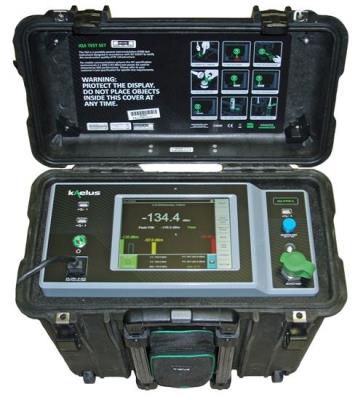
|
|
The Kaelus iQA-0700LC Passive Intermodulation (PIM) Analyzer is a feature rich, high power PIM test solution. This field proven analyzer enables network operators to improve site performance by finding and eliminating sources of passive intermodulation at the cell site. The design includes an integrated panel PC with intuitive touch screen interface for performing tests and generating site reports. This version ships from the factory enabled to support Range to Fault (RTF) technology: with the purchase of an optional RTF module, operators are able to activate RTF mode within the iQA user software to accurately measure the distance to return loss faults as well as the distance to PIM faults at the cell site.
Specifications.
System;
Measurement method: Reverse (reflected) PIM, 3rd, 5th, 7th, 9th and 11th order.
Residual PIM: < -115 dBm / -158 dBc max (<-125 dBm / -168 dBc typ) (x2 @ 20W).
User interface ports:
3x USB,
x1 LAN,
1x RF output (7-16 DIN female),
1x monitor port (N female).
Display: 8.4in (213mm) touch screen display.
Transmitter;
Transmit frequencies: 728-746 MHz.
Frequency increment: 50 kHz.
Frequency accuracy: ± 5ppm (max), aging ± 1ppm (max) after first year.
Power per tone (adjustable): 2x 2 to 20W (+33 to +43dBm).
Power accuracy (per tone): ± 0.5dB (max).
Receiver;
Receive band (50kHz steps): 698-716 MHz.
Measurement noise floor: < -128 dBm.
Measurement range: -50 dBm to -128 dBm.
|